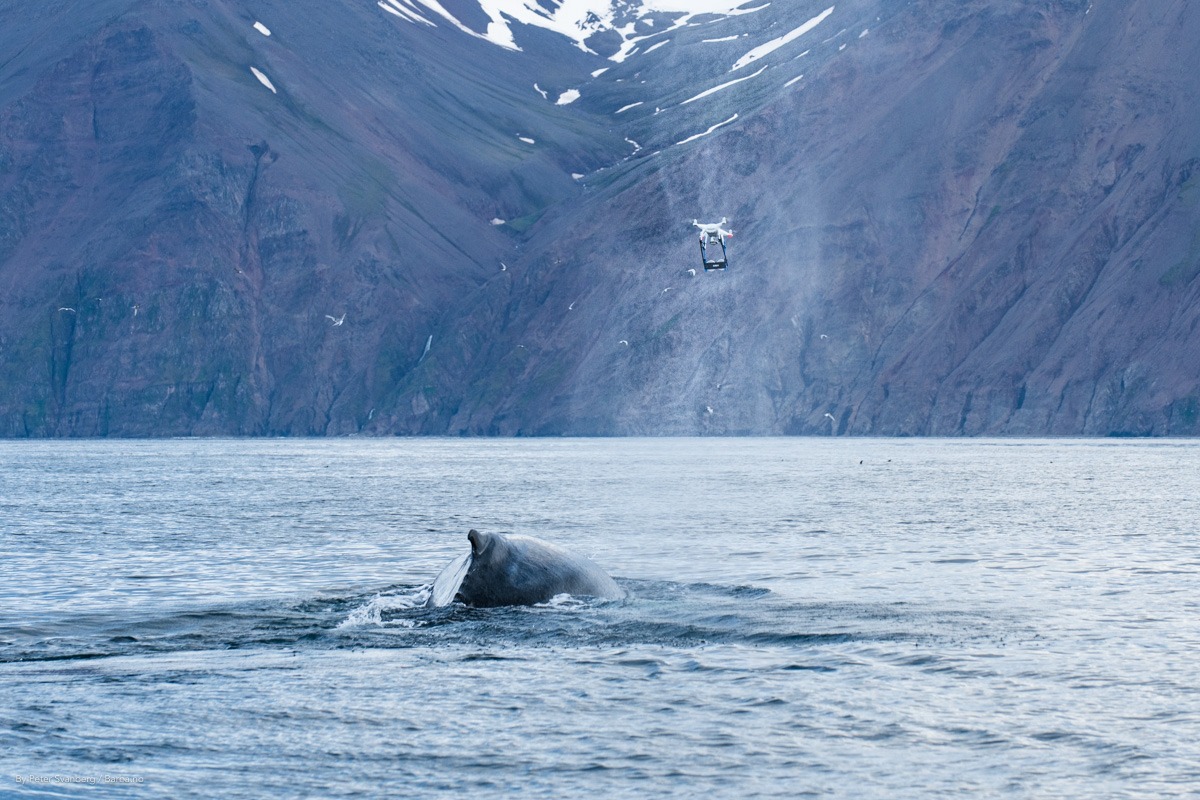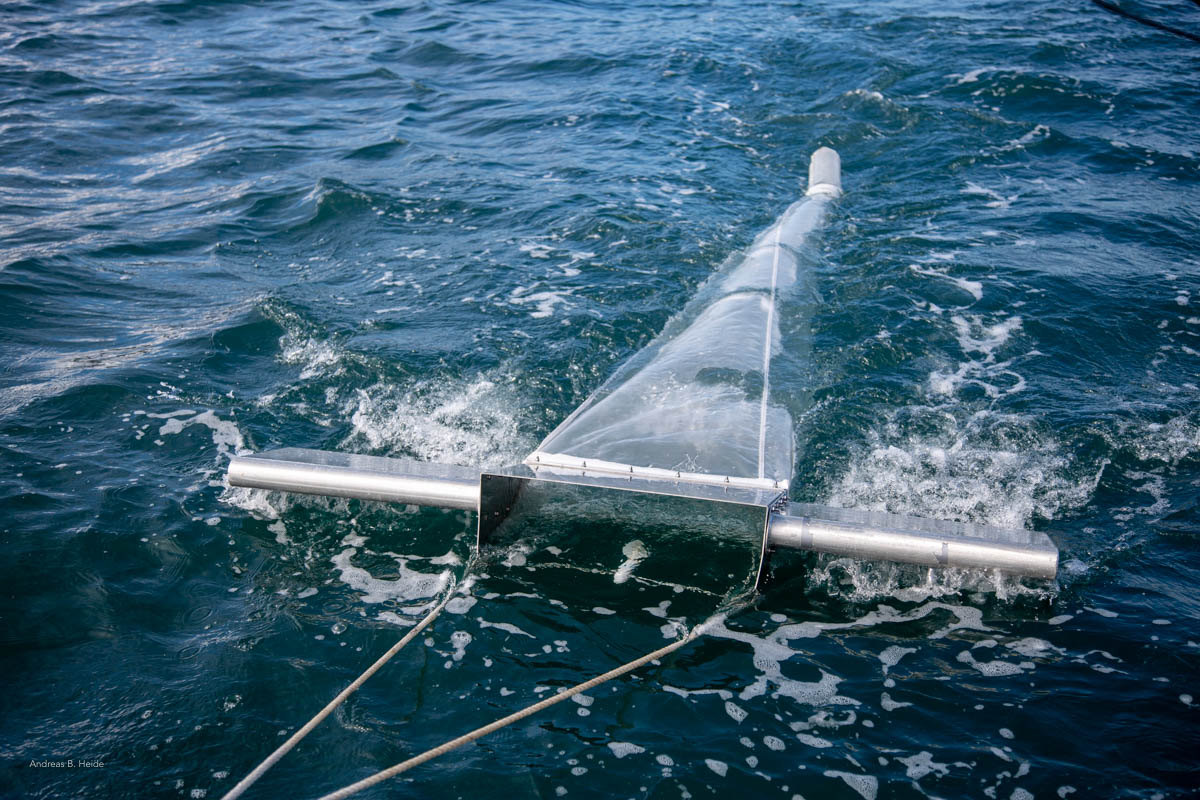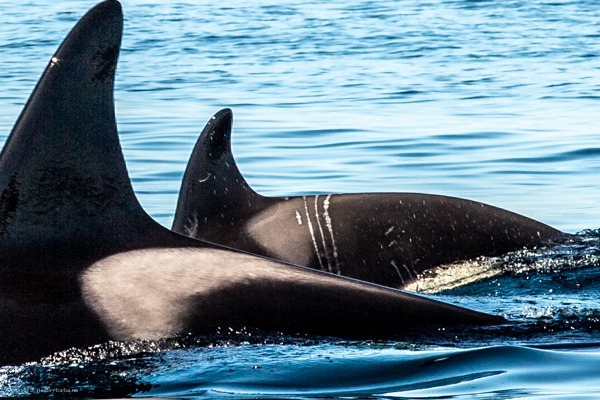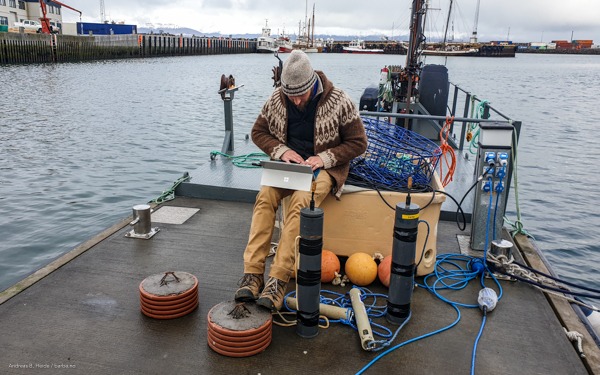‘A silent platform, for cutting-edge research, to make our ocean’s voice heard’
Bridging science and storytelling through sailing, Barba is more than the sum of its parts. This quiet, floating platform is captained by marine biologist and Navy diver, Andreas B. Heide, enabling world-leading and respectful marine biological research. We host a diverse spectrum of scientists, forming a dynamic community of ocean ambassadors and Arctic explorers. Together, we aim to conduct research to protect our planet’s threatened marine ecosystems.
Barba’s role as a platform for science is clear and simple. We use 10 years’ experience of navigating Arctic waters to explore the remote polar Atlantic. We have low operating costs, allowing long-term expeditions. Our crew is diverse and trained in marine biological research.
Together with Barba, research institutes are enabled to study threatened marine ecosystems, using a variety of methods, in the most challenging locations.
We study threatened marine ecosystems to understand changes over time and better predict their uncertain future. Our focus species are cetaceans – whales, dolphins and porpoises. Apex predators, intelligent and mysterious – cetaceans are also vulnerable to our changing ocean, driven by human activity. In this way, they act as ocean sentinels, with shifts in whale populations reflecting broader marine ecosystems changes.
We have two whale research aims:
1. Explore the abundance, distribution and ecology of these enigmatic species
2. Document changes in whale populations over space and time, as a response to human activity
Within these aims, we are particularly interested in three human threats to our ocean: persistent organic pollutants (POPs), plastic pollution and climate change.
Above all, we aim to encourage marine conservation through this science. As a result, we support science that focuses on threatened and understudied species, vulnerable ecosystems and the most serious human threats.
Barba brings scientists together to form an empowered community. Our principal scientific partner is Whale Wise, a marine conservation charity based in the UK. Led by Tom Grove, a PhD student at the University of Edinburgh, and Alyssa Stoller, a master’s graduate in Marine Systems and Policy, they study the interaction between whales and human activity. In collaboration with Prof. Marianne Rasmussen (University of Iceland), they guide our research and forge collaborations to employ an array of methods.
We support a wide range of scientific methods, that helps scientists better understand the marine environment. We lean towards conducting scientific research that is visually engaging, to support our communication work as well as advancements in science.
Our most exciting and novel method is blow sampling. Essentially, we use drones to collect samples of a whale’s breath. Like our own breath, whale blow is an incredible source of biological information, containing substances such as DNA, bacteria, proteins and hormones.
Blow sampling with drones has only been attempted in the last few years, so a large part of our work involves simply developing the method. For example, in 2019, we worked with Whale Wise to measure hormones in humpback whale blow, with the aim of measuring stress levels in the future.

An alternative method to measure whale health involves the collection of aerial images with a drone. Using these, we can measure the body condition of each whale, which may reflect food availability and ecosystem health. We also assess scarring patterns, which can be used to quantify the intensity of human-derived pressures such as entanglement and ship strike. Aerial imagery of great whales is a major aim of the Arctic Sense expeditions.

Beyond whales, we also take part in ocean environmental monitoring. For example, we use a manta trawl to sample the ocean’s surface layers for microplastic pollution. During the Arctic Whale 2019 expedition, we regularly collected samples along the entire route. The results forms part of a global monitoring effort to understand the prevalence and threat of microplastics in our oceans.
The manta trawl is used for sampling the surface of the ocean for micro plastic. By filtering water we obtain a sample containing organic matter and different variants of micro plastic. The photo carousel shows the procedure from collecting the sample, to subsequent analysis with electron microscopy at the University of Oslo. By removing organic matter with acids we are left with visual proof of the micro plastic polluting our oceans.
We collect not only whale blow, but also blubber. This involves a biopsy gun and a hollow dart to extract a small piece of blubber. This sample provides a wealth of information about genetics and health, particularly pollutant levels such as persistent organic pollutants (POPs) and heavy metals.
The video above together with the below imagery shows the process of sample collection and analysis, using an electronic microscope at the University of Oslo. Samples were collected for the University of Iceland in Skjálfandi Bay, Iceland, 2019.
In addition to above described sampling procedures, we are involved in a wide range of procedures.
Monitoring underwater sound provides a window into the lives of whales. First, we can understand how, when and why whales communicate. Second, we can monitor the destructive contribution of human activity to underwater noise. Together, we assess the vulnerability of whales to noise pollution in Arctic waters.
We enable a variety of acoustic field methods. For example, as part of the Arctic Sense 2021 expedition, we listened to whales in real time by towing a hydrophone and deployed a long-term hydrophone south of Spitsbergen to understand whale migration patterns.

Photo-identification is a simple but effective tool to understand whale populations. By taking photographs of unique natural markings on a whale, and comparing photos between different areas and times, we can track the movements of individual whales around the entire North Atlantic. The photo to the right shows an orca calf photographed outside Stavanger, Norway in 2019. The rake marks (scarification) will stay with the orca throughout its lifetime, so when the same individual is photographed at a later time and place, it provides valuable information about distribution and the populations as a whole.

An acoustic trap is quite simply a hydrophone (underwater microphone that is left submerged for a given duration of time, later to be collected for the sound data to be analysed. To the right, photo from Husavik, Iceland as we prepare for the deployment of two sound traps for the University of Iceland.

Our work